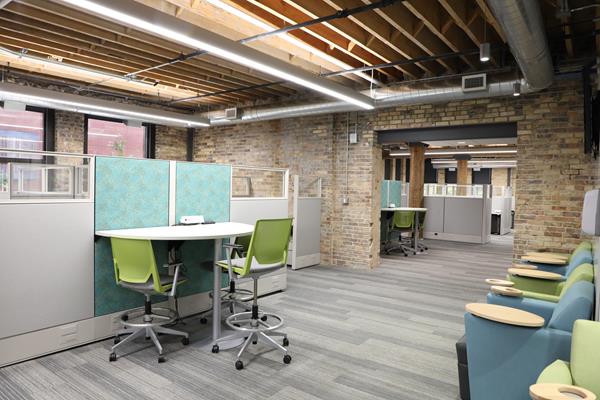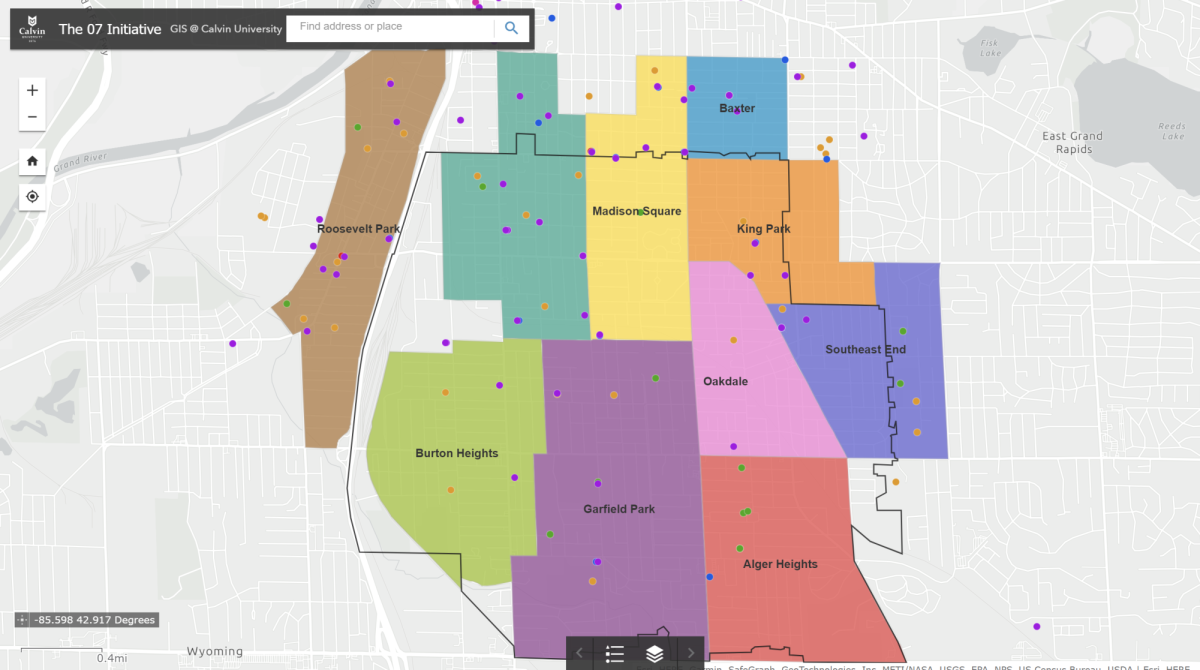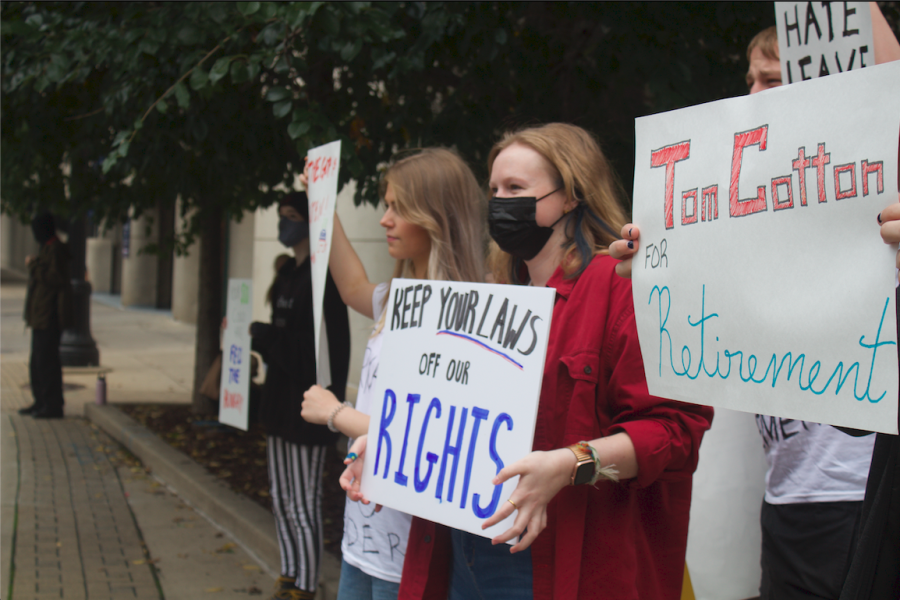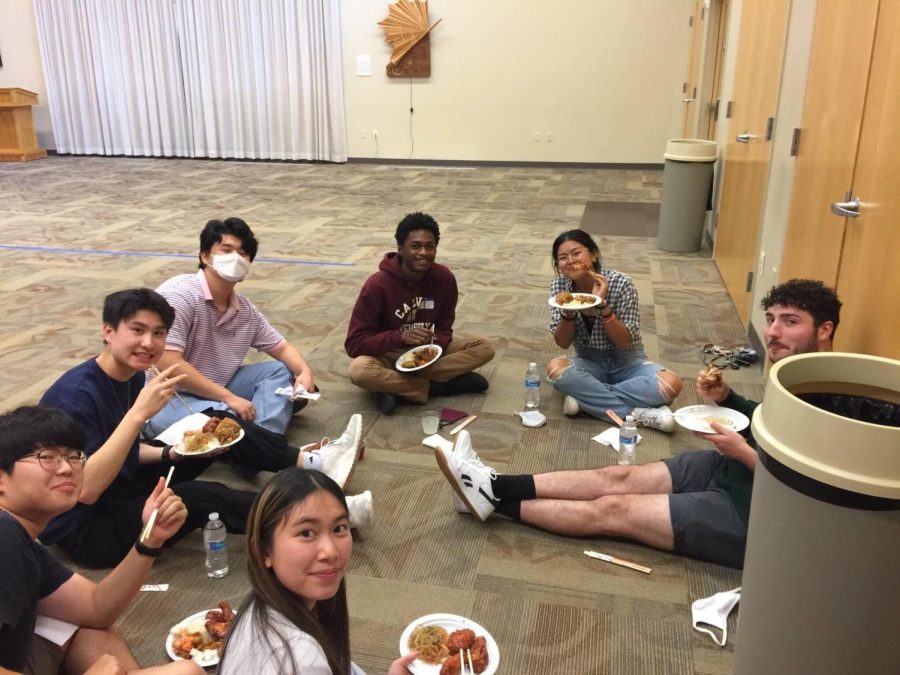On Sunday, January 29, hundreds of Grand Rapids residents gathered at Gerald R. Ford International Airport to protest President Trump’s immigration ban. Just two days earlier, the president had issued an executive order called “Protecting the Nation from Foreign Terrorist Entry into the United States.” The order immediately sparked protests across the country.
In his executive order, President Trump cited a failure to implement stringent visa-screening techniques as a key reason for the terrorist attacks on September 11, 2001. However, as Mark Berman reported in the Washington Post last week, “No one involved in those attacks was born in the countries Trump’s order included . . . the list of countries the ban affects also did not include countries where people behind several other attacks in recent years — along with high-profile plots that were not carried out — were born.”
This concern has all but confirmed suspicions that the immigration ban is Trump’s way of making good on his campaign promise to ban Muslims from the country. On his campaign website, Trump called “for a total and complete shutdown of Muslims entering the United States until our country’s representatives can figure out what is going on.”
Many members of the Calvin community are skeptical about whether Trump’s immigration ban will protect the country – or if that is even its core purpose. Professor Carl Plantinga of the CAS department said that he doesn’t think the immigration ban will “make America safer.”
Trump, Plantinga says, didn’t implement the ban well: “It was kind of chaotic.” Plantinga pointed out the extensive vetting process that refugees undergo, which “has worked pretty well.”
In fact, Plantinga stated, “I think morally [the immigration ban] is wrong … we shouldn’t ban refugees.” Plantinga says he attended the protest at the airport in large part because he has been involved with teaching English to the refugee community at his church, Church of the Servant.
“I’ve always been very proud of the way the church has welcomed refugees,” said Plantinga, who also testifies to Scripture’s very clear call to welcome the outsider.
Junior Laurel Luke went to the protest because she “wanted to see change.” The protest, she says, “had a very distinct purpose … and a very direct call for action for something that I care deeply about.”
Paola Koki, a senior in Calvin’s pre-med program, went because she “disagree[s] with the fact that people who have legally obtained access to the US and are leaving their home, be it out of duress or extenuating circumstances or not, should not be turned back or detained […] It goes against the foundations the U.S. was built on,” she added.
Ana Ramos, a senior, says she felt compelled to attend the protest for a similar reason. She, like so many others, came not only to protest the ban on individuals from the seven-country list, but also in opposition to Trump’s order to build a wall on the Mexican border.
“Immigrants and refugees are a population that I hold very close to my heart and that I care for deeply,” Ramos says. “Both of my parents are immigrants from Mexico, so I know the struggle that many immigrants face when they get to America, but I also know how hard they work for their families.”
The protest brought together an array of Grand Rapids residents. Even grandmothers came out in full force. Although there were no immigrants or refugees detained at the Grand Rapids airport, a sizeable population of Grand Rapidians came out to show their solidarity with and hospitality to “outsiders”: immigrants, refugees and asylum-seekers — all of whom are the kinds of people most Americans are descended from.
At the protest, hundreds of people lined the road to the airport terminal, cheering before marching to its entrance. The Facebook event reports that over 700 attended; other sources list that number as being closer to 1000.
As the protesters gathered, they chanted, “No hate! No fear! Refugees are welcome here!” and joined together in singing “This Land is Your Land.” Although there was snow overhead and mud underfoot, many parents brought their children, who came equipped with their own signs. Participants also carried signs with messages like “Immigrants are a blessing, not a burden” and “Refugees welcome.”
Cars on their way to and from the airport slowed down as they passed the line of protesters, pausing to see what the commotion was about. Most were friendly, honking their horns or offering a thumbs-up, although a few gave a thumbs-down sign or waved a middle finger.
Even the police at the march seemed supportive of the protesters’ cause. They offered attendees rides from the back of the line to the front in order to minimize time spent in the biting wind. A few officers also smiled and gave thumbs-up signs to the line of protestors.
Paola Koki said, “It was really encouraging to see that numerous people in GR disagreed [with the ban] and were willing to stand with and protect immigrants.” Ana Ramos also applauded the community of Grand Rapids for turning out in such force to show support for the refugee and immigrant communities.
Still, she says, “protests are a great starting point for pursuing justice, but it cannot end there … my hope [is] that people who think refugees and immigrants pose a threat to our country can learn more about why refugees and immigrants are actually blessings to our communities.”








